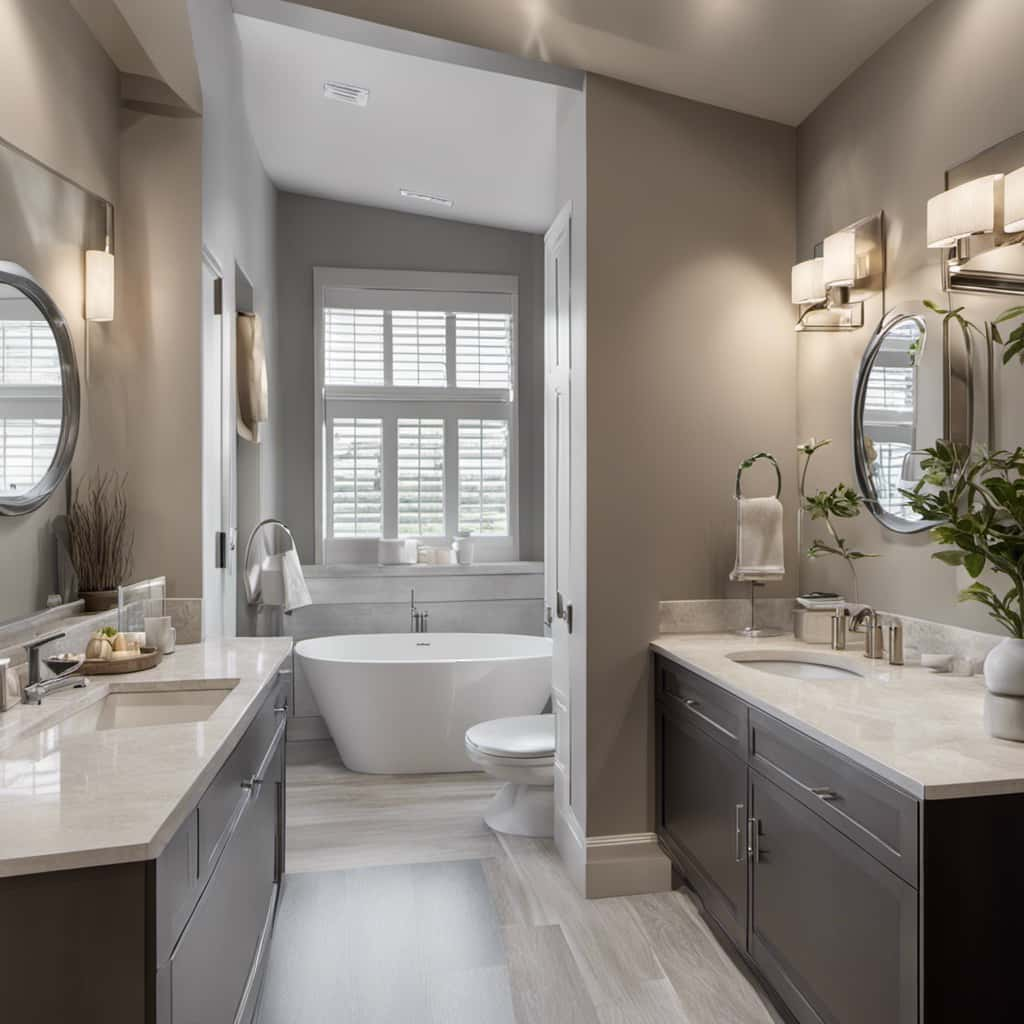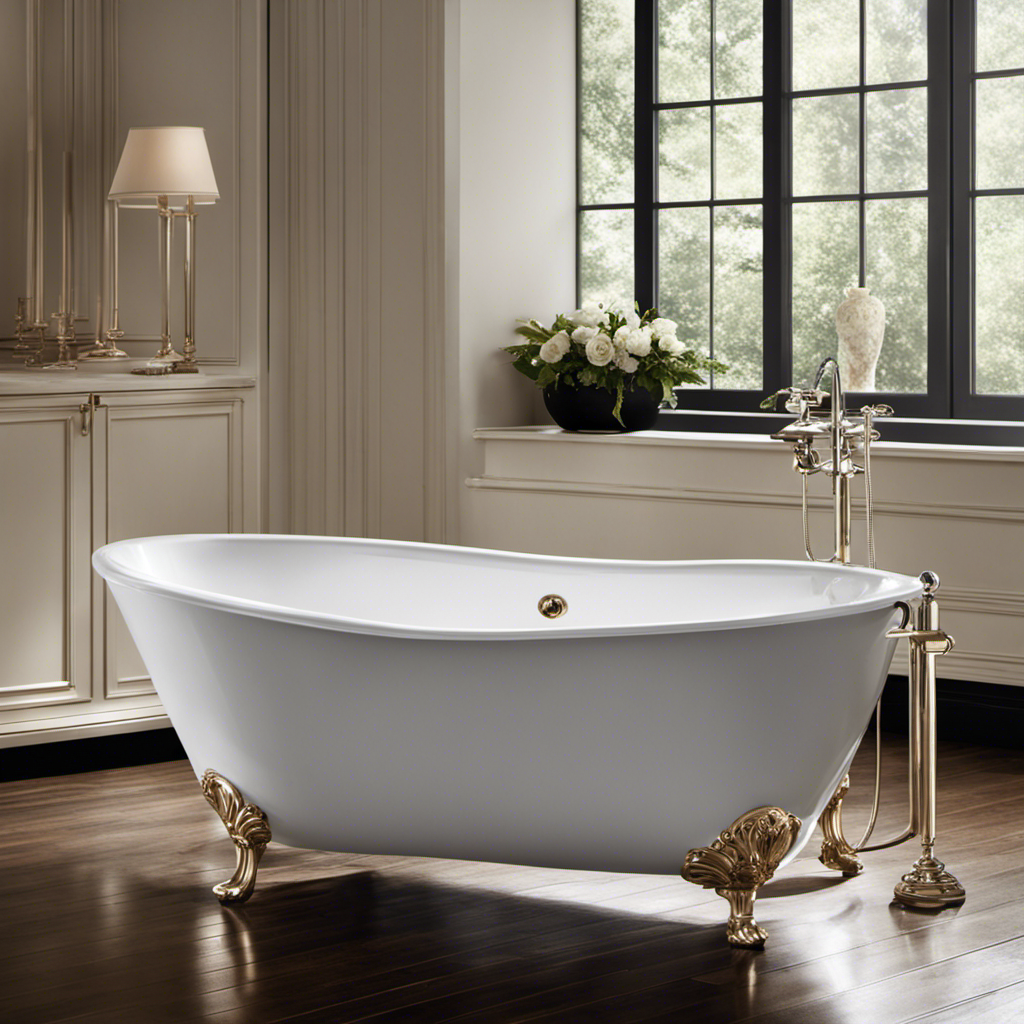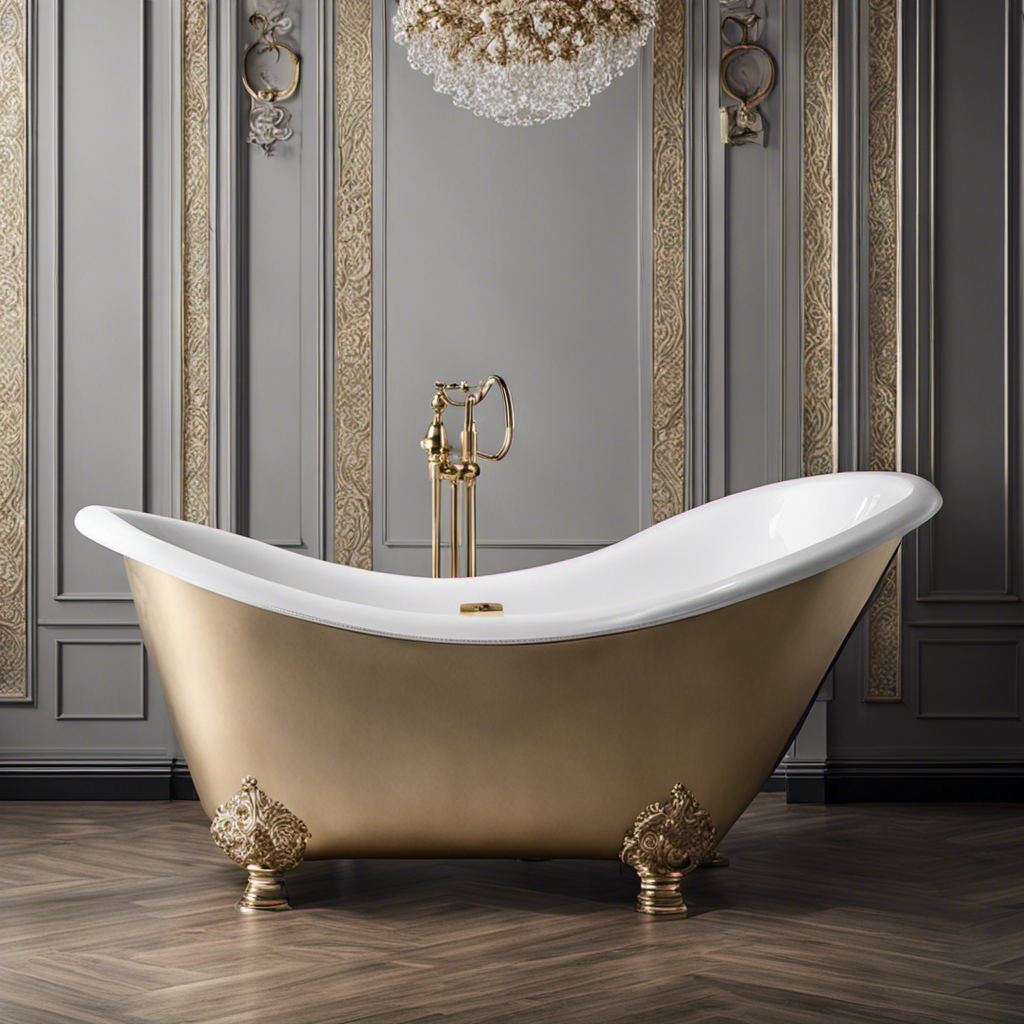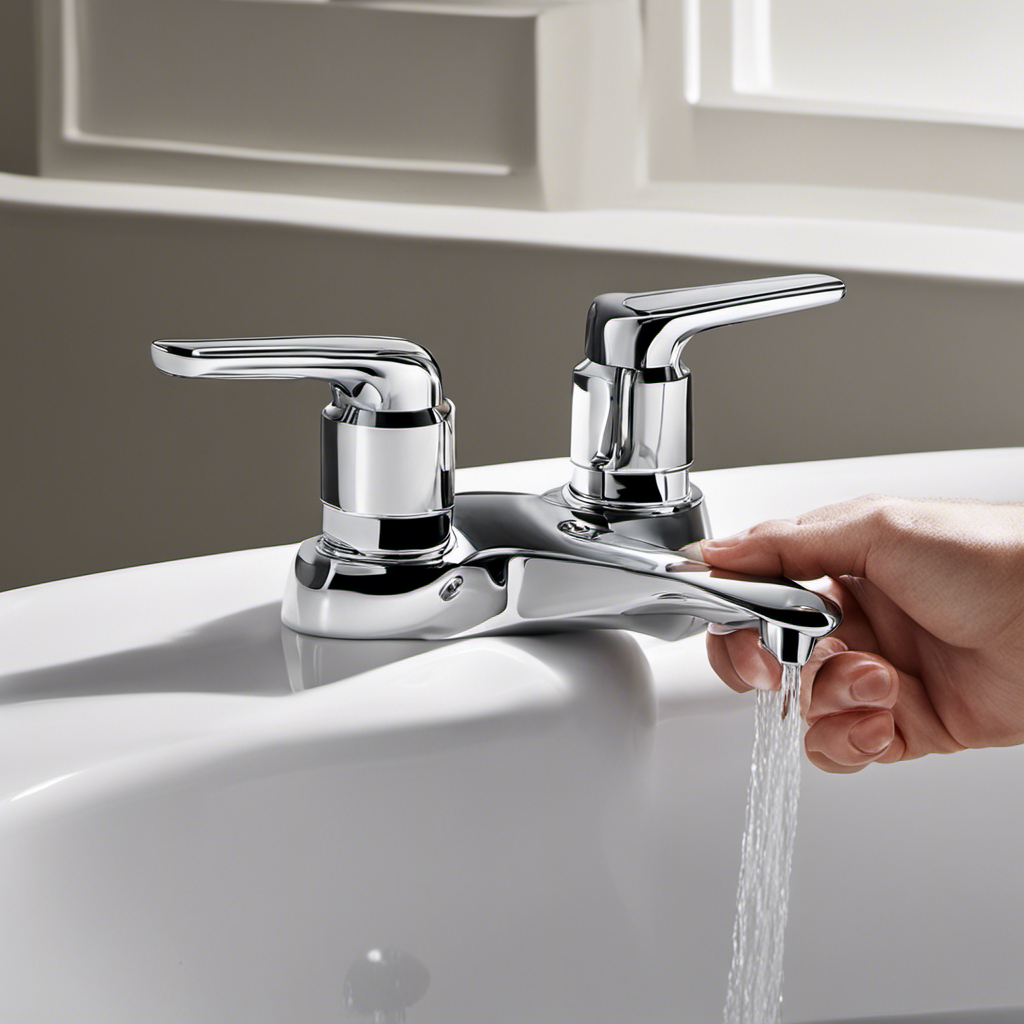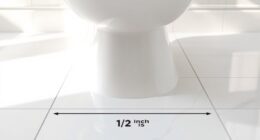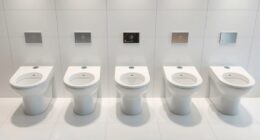As we explore the history of toilet water usage, we delve into a time when old toilets were as thirsty as a desert wanderer. Before the 1980s, these high-water consumption toilets could guzzle gallons upon gallons with each flush.
But fear not, dear reader, for the tides have turned. Join us on a journey through the eras of water-saving toilets, from the transition in the 1980s to the latest innovations in toilet water efficiency.
Key Takeaways
- Old toilets used excessive amounts of water per flush, up to 7 gallons.
- High-water consumption toilets strained limited water resources.
- These toilets contributed to higher water bills for households and businesses.
- Research showed that these toilets were inefficient in terms of water conservation.
Pre-1980: High-Water Consumption Toilets
Before 1980, we relied on high-water consumption toilets that used excessive amounts of water per flush. These high flush toilets were notorious for being water-wasting fixtures, consuming up to 7 gallons of water per flush.
This excessive water usage not only put a strain on our limited water resources, but also contributed to higher water bills for households and businesses. Research has shown that these toilets were inefficient in terms of water conservation, as they flushed away more water than necessary to effectively remove waste.

This led to a growing concern for sustainability and the need for more efficient toilet designs. Thankfully, advancements in technology and plumbing regulations have resulted in the development of low-flow toilets that use significantly less water per flush, addressing the water wastage issue associated with high-water consumption toilets.
1980-1994: Transition to Low-Flow Toilets
During the transition period from pre-1980 high-water consumption toilets, we saw a significant shift towards low-flow toilets that used much less water per flush. This transition wasn’t without its challenges.
Here are some of the obstacles faced and the environmental impact of low-flow toilets:
- Resistance to change: Many consumers were hesitant to switch to low-flow toilets due to concerns about their flushing power and effectiveness.
- Retrofitting older plumbing systems: Installing low-flow toilets in older buildings required modifications to the plumbing system, which added to the cost and complexity of the transition.
- Education and awareness: There was a need for public education campaigns to inform consumers about the benefits of low-flow toilets and how to use them effectively.
The environmental impact of low-flow toilets has been significant. By reducing water consumption per flush, these toilets have helped conserve water resources and reduce strain on wastewater treatment plants. Additionally, they’ve contributed to lower energy consumption and greenhouse gas emissions associated with water treatment and distribution.

1994-2010: Standardization of Low-Flow Toilets
We standardized low-flow toilets in 4-2010, ensuring consistent water usage and efficiency across the industry. This standardization was a significant step towards water conservation and minimizing the environmental impact of toilet usage.
Low-flow toilets, also known as high-efficiency toilets (HET), were designed to use significantly less water per flush compared to older models. The standard set in 2010 dictated that low-flow toilets should use a maximum of 1.28 gallons per flush (gpf), which is a significant improvement compared to the 3.5 to 7 gpf used by older toilets.
This reduction in water usage not only helps to conserve water resources but also reduces the strain on wastewater treatment plants and minimizes the energy required for water treatment.
Standardizing low-flow toilets has been a crucial step in promoting sustainability and responsible water management.

2010-Present: Advances in Water-Saving Technology
Since the standardization of low-flow toilets in 2010, we’ve seen significant advances in water-saving technology. These innovations have revolutionized the way we use and conserve water in our toilets. Here are three remarkable features that have emerged in smart toilets:
- Dual-flush mechanism: Smart toilets now offer a dual-flush system that allows users to choose between a full flush for solid waste and a partial flush for liquid waste. This feature ensures that only the necessary amount of water is used for each flush.
- Water-efficient flushing technology: Advanced flushing mechanisms have been developed to optimize water usage without compromising the toilet’s performance. These toilets use powerful jets and precise water flow to effectively remove waste with minimal water consumption.
- Automated sensors: Smart toilets are equipped with sensors that detect when the user has finished using the toilet. This eliminates the need to manually flush and ensures that water isn’t wasted unnecessarily.
With these water-saving features, smart toilets have made significant strides in conserving water while maintaining hygiene and functionality. These advancements pave the way for even more exciting innovations in toilet water efficiency in the future.
Future: Innovations in Toilet Water Efficiency
Moving forward, let’s explore the exciting potential for future innovations in toilet water efficiency.
As technology continues to advance, we can expect to see the emergence of smart toilets that are designed to optimize water usage. These toilets will be equipped with sensors and artificial intelligence algorithms that can detect the appropriate amount of water needed for each flush based on factors such as waste volume and type.

Additionally, waterless toilets, which eliminate the need for water altogether, are also being developed. These toilets use innovative technologies such as vacuum systems or incineration to dispose of waste without the use of water.
With these advancements, we can look forward to more sustainable and efficient toilet systems that conserve water resources while maintaining optimal hygiene standards.
Frequently Asked Questions
What Were the Main Reasons for the High-Water Consumption of Toilets Before 1980?
Before 1980, toilets consumed a significant amount of water per flush due to several reasons. Challenges included outdated technology, lack of regulations, and a focus on durability rather than water efficiency.
How Did the Transition From High-Water Consumption Toilets to Low-Flow Toilets Occur Between 1980 and 1994?
The transition from high-water consumption toilets to low-flow toilets between 1980 and 1994 posed challenges. However, water saving innovations, such as dual-flush systems and pressure-assisted technology, were developed to address these issues and promote water conservation.

What Were the Main Challenges Faced During the Standardization of Low-Flow Toilets From 1994 to 2010?
During the standardization of low-flow toilets from 1994 to 2010, we faced several challenges. These included ensuring consistent water efficiency, addressing potential clogging issues, and ensuring user satisfaction with the new technology.
What Are Some of the Latest Advances in Water-Saving Technology for Toilets Since 2010?
What are some of the latest advances in water-saving technology for toilets since 2010? We’ve seen remarkable improvements in toilet efficiency, with dual-flush toilets, pressure-assisted flushing, and smart toilets that adjust water usage based on needs.
What Are Some Potential Future Innovations in Toilet Water Efficiency That May Further Reduce Water Consumption?
Smart toilets and water recycling are potential future innovations that may further reduce water consumption. By incorporating advanced technology, smart toilets can optimize flushing based on usage, while water recycling systems can reuse water for flushing, conserving valuable resources.
Conclusion
In conclusion, old toilets used high amounts of water per flush, with pre-1980 models consuming the most. However, the transition to low-flow toilets in the 1980s and standardization in the 1990s significantly reduced water consumption.

Today, advancements in water-saving technology continue to improve toilet efficiency. As the saying goes, ‘Every drop counts,’ and it’s crucial for us to embrace these innovations to conserve water and protect our environment for future generations.
